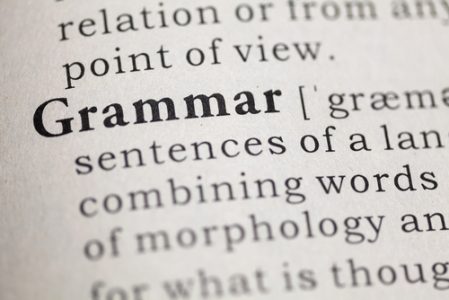Putting Grammar Back In: Linguistically-Responsive Writing Instruction

Contributed by Maya Chakravorty, Ph.D Candidate in Classical Studies
(3-minute read)
As a graduate fellow with BU’s Writing Program, I had the pleasure of attending the workshop “Putting Grammar Back In: Linguistically-Responsive Writing Instruction”, hosted by Master Lecturers Christina Michaud and Marisa Milanese earlier this semester. The aim was to talk about grammar and language instruction in the writing classroom, with a focus on inclusivity and accessibility. While we primarily discussed approaches to teaching first-generation students, the points and observations made were also certainly applicable to multilingual writers, and indeed all BU students.
I should at this point acknowledge my privilege: my primary language is English, and I attend an institution where the language of instruction is also English. As such, I can only speak to my experiences as an instructor. When it comes to addressing grammar and language instruction as a teacher, my guidelines for the assignments have always included a phrase like “Writing should be clear and coherent with little to no spelling and grammatical errors”. When marking essays with typos, and spelling and grammatical errors, my default comment was something to the effect of “this piece would have benefitted from another read-through for spelling and grammar”. I tell my students that grammar is important because it affects the clarity of their arguments. Yet, as this session has taught me, while correctness and coherence are important components of writing, just telling our students to go back and proofread their assignments overlooks other important barriers. Each field may have unique requirements concerning grammatical correctness in written assignments, and similarly, instructors likely differ in how they prioritize grammatical accuracy and clarity, as well as ideas and thought process. In my experience as an instructor, I have commented on, or deducted points for common grammatical errors such as subject-verb agreement. This workshop has helped me to understand that regardless of how they are weighted, these errors may not stem from laziness or a lack of proofreading. As instructors, we should acknowledge that the rules and expectations of grammar change over time, even as we cling to the ones which we are familiar with. Furthermore, these expectations tend to disproportionately affect first-generation and multilingual students.
When the hosts asked us how we incorporate grammar in our classes, almost all of us said that it was primarily addressed in comments in the margins of assignments. While this is still an important form of feedback, I have realized that these comments and suggestions should not be the only occasions when I discuss grammar in class. If it is going to continue being a key component of my writing assignments, I need to set aside time in class to focus specifically on grammar, the amount of which will depend on the class and its needs each semester. New strategies will include discussing common grammatical errors which I noticed in recent assignments at the beginning of class. This will be a learning opportunity for all students, regardless of whether or not they have made these errors, and will ensure that nobody feels singled out. Depending on the class size, I will also consider enforcing a mandatory peer-review of drafts, where students would have to swap a draft with one of their classmates via email, which would encourage peer-review of grammar and the clarity of the arguments made. Both the first and revised drafts would then be submitted to me. I hope that by implementing some of these strategies, grammar won’t be a foreign concept to my students. Look out for Federica Bocchi’s post, which will offer her perspective as a multilingual instructor and learner, and further suggestions for how to support multilingual students.